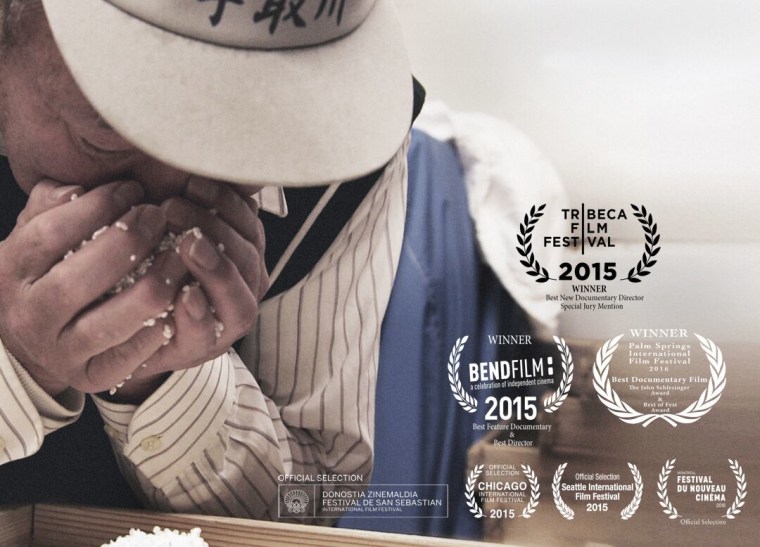At a 2012 New York fundraiser for his short film series “I Am What I Eat,” director Erik Shirai met a young man named Yasuyuki Yoshida, who had been hired to pour saké at the event. There, Yoshida invited Shirai to his family’s brewery in the Ishikawa prefecture of northern Japan to see how world-class saké is made, not knowing that he’d eventually become one of the subjects of Shirai’s award-winning documentary “The Birth of Saké.”
“Japanese people always say, ‘Next time you’re in Japan, come out and we’ll take care of you,’” Shirai told NBC News. “It’s a formality, and no one usually takes them up on their offers, so he was pleasantly surprised when we actually came knocking on his door.”
Saké is a Japanese alcoholic beverage that is made by fermenting rice. There are many different types of saké, determined by brewing methods and the percentage of rice milling, but the Tedorigawa Yoshida Sake Brewery, run by Yoshida’s family, specializes in daiginjo, which is the highest grade of saké.
Shirai first visited the 144-year-old brewery in the summer of 2012 during off-season, and even though it was empty, he recalled feeling the energy of the space immediately and knew he wanted to film it.
Yoshida, the sixth-generation heir of Tedorigawa, spends half of the year traveling around the world promoting its saké as the face of the brand. The rest of the year, he and a team of dedicated workers are secluded within the brewery compounds for six months straight, hand-crafting saké all day and bunking together in tiny rooms at night in order to properly carry out the 2,000-year-old tradition.
Many of the workers featured in "The Birth of Saké" are migrant farmers, ranging from 20 to 70 years old, who grow rice in the summer and brew saké during the winter. The head brewmaster Yamamoto Toji, at 68 years old, has worked there for 53 years. Yoshida, in addition to being the brewery's president, hopes to take over as brewmaster when Toji retires.
Though saké is consumed all over the world, the labor-intensive production process is relatively unknown, even in Japan. Shirai admits he understood little about saké before he began production on the documentary. Like many Americans, he associated saké with the hot saké he got over-the-counter at a sushi bar, though he now knows that the highest grades of saké are typically served cold.
To film “The Birth of Saké,” Shirai and his team lived in Tedorigawa with the workers for weeks at a time, over the course of three production seasons. They woke up at 4 a.m. with the workers every morning, and ate meals, sang karaoke, and — of course — drank saké with them after work.
As a result, the documentary balances the physical labors of saké-making, which Toji describes as taking the saké from “birth” and carefully nurturing it until it becomes a mature adult, with the workers’ personal stories and private sacrifices.

Prior to “The Birth of Saké,” Shirai worked on numerous food and culture shows, including the Travel Channel’s “No Reservations with Anthony Bourdain,” which he says helped him develop an appreciation for the universality of food and its ability to connect people around the world.
“When I was younger, growing up in a predominantly black and Mexican neighborhood in Chicago, I was ashamed to say that I was Japanese because I was different,” said Shirai, who is Japanese American. “But making this film made me proud to be Japanese.”
He added, “In Japan, it’s such a normal thing to be an artisan, to dedicate your entire life to one craft and to be really good at it, so much so that Japanese people don’t find it interesting. But I was able to understand the culture, but also see it from a different perspective and really appreciate it. Hanging out [at the Tedorigawa brewery] for such a long period of time helped me realize that the Japanese culture is very embedded in who I am, in my aesthetics, my values, and how I see the world.”
“The Birth Of Saké” will be available on Netflix in April.
